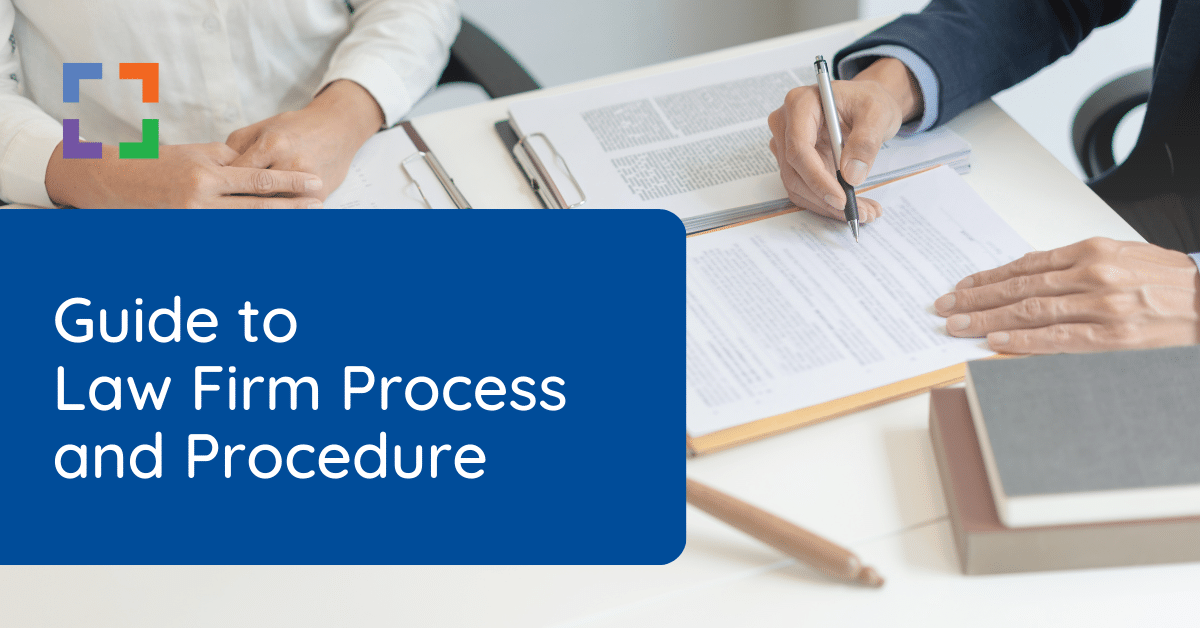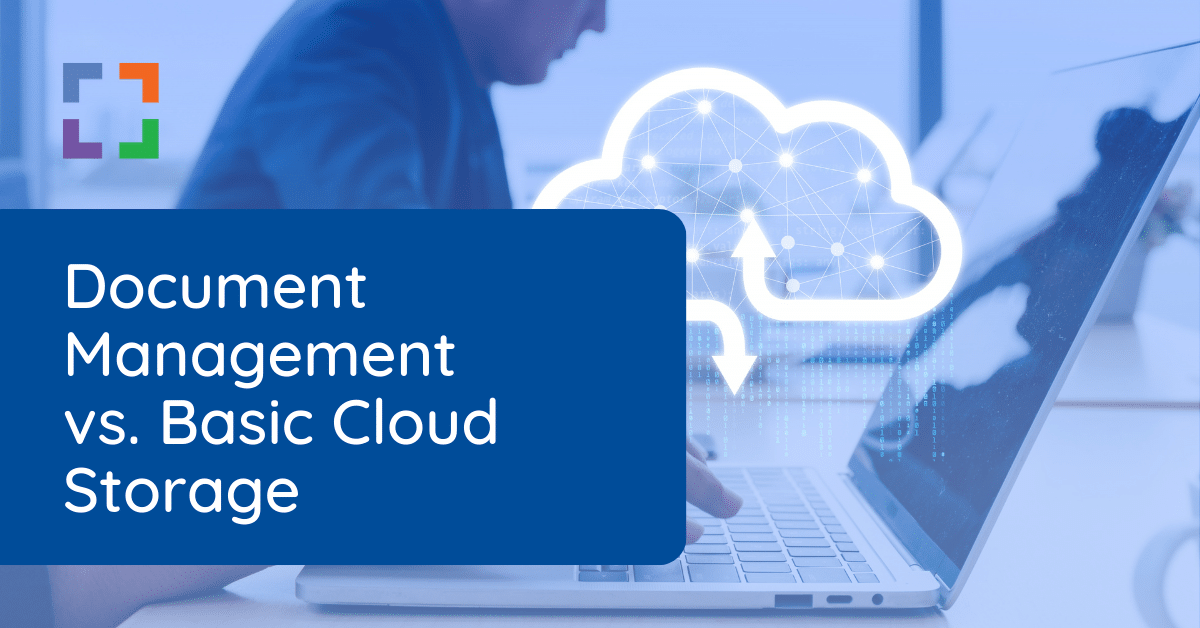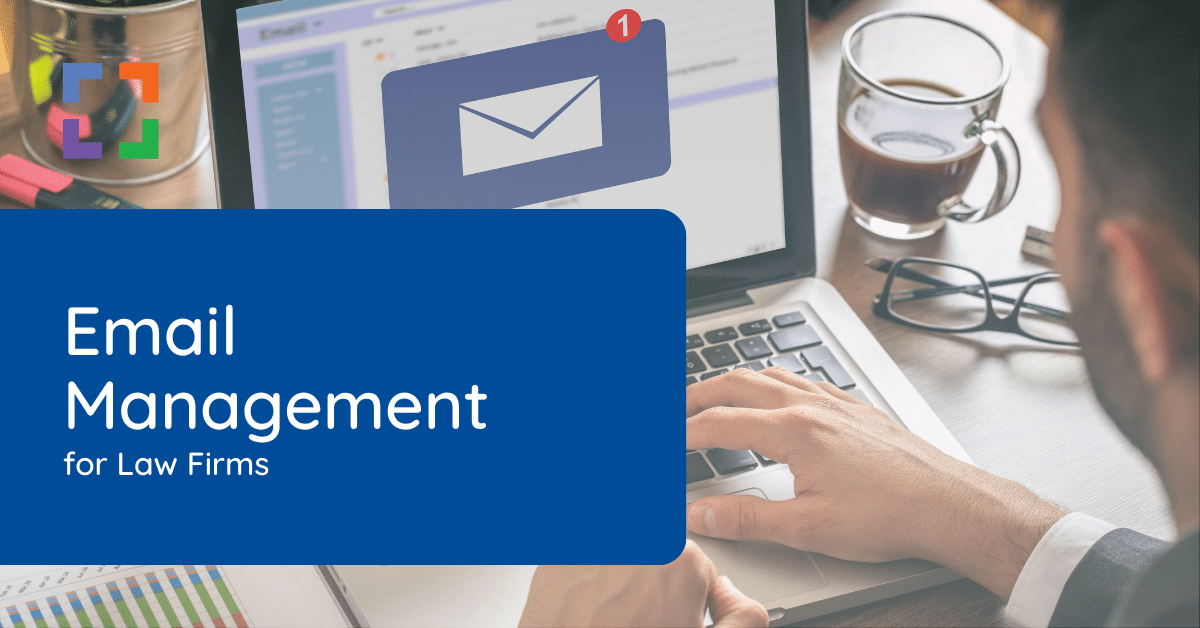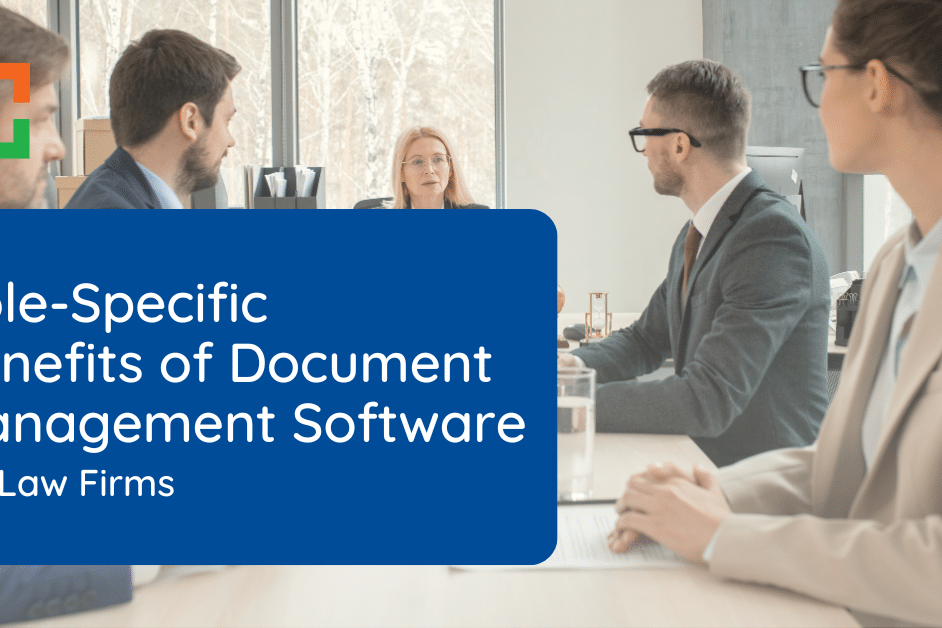How to Organize Your Legal Files
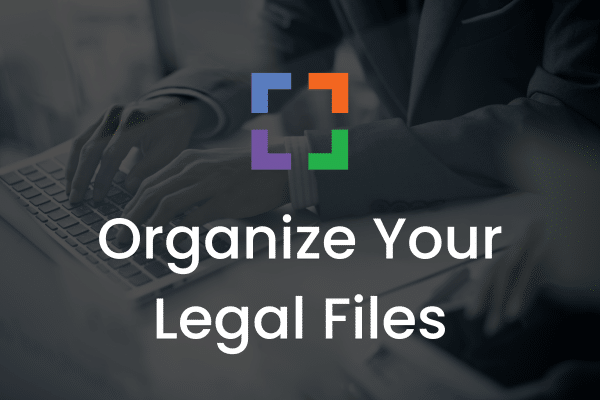
Let’s discuss how to organize legal files.
Keeping your law firm’s documents and files organized is hard. But you can do it.
Remember, with streamlined organization comes a streamlined business. It’s worth the various considerations to ensure your firm has the most optimal processes in place.
Utilize tools and this article to make that happen!
By the time you finish this article, you’ll be an expert in organizing your law firm’s documents, including:
- Organization systems & structures used by law firms
- What software / tools will help you organize your legal files
- Document naming conventions
- How to transition to a new, air-tight legal filing system
Plus: Here’s a free Law Firm File Organization Checklist that you can use right away. Though, we recommend that you also keep reading for more information!
In This Article
- Introduction to Organizing Your Legal Flies
- Why You Should Upgrade Your Legal Filing System
- 5 Tips to Organize Legal Files
- Using the Cloud for a Paperless (or Paper-Lite) Law Firm
- Legal Filing System Tools: Basic Cloud Storage vs. a DMS
- Simplified & Efficient Law Firm File Organization
- Frequently Asked Questions - How to Organize Your Legal Files
LexWorkplace Demo + Free Trial
Use this trial to fall in love with our:
- Helpful Demonstration and Assisted Setup
- Optimal Organizational Tools
- Seamless Email Integration
- Effective Document Management
- Ready-to-Help Consultants
Ready to Try the Last DMS You’ll Ever Want?
Introduction to Organize Legal Files
Things always start so simple.
When you start as a solo law practice, files and documents typically start very organized. You create folders per client or per matter and maybe create subfolders to organize by type (contracts, motions, etc.) Nice and simple.
But as your client list and your team grow, inevitably, your perfect file structure starts to show cracks. People don’t always follow your structure. Special cases have special circumstances.
Over time, your simple, tidy legal file organizational structure turns into a giant mess of files and folders and you’re left wondering how to organize legal files again.
You shouldn’t feel too bad — it happens to almost every law firm sooner or later.
But you should invest the time into fixing it; into setting up a system that will stand the test of time, and scale up no matter how many documents, clients, matters or coworkers you throw at it.
It’s time to truly organize your legal files. Many law firms struggle to implement and then maintain a filing system for the incredible amount of documents and files they generate each day. Luckily, there’s a better way.
The best system for any growing law office includes a combination of two simple but important elements:
- Software tools to create and enforce structure, and:
- Best practices your team can follow to keep things organized and accessible.
You’ll find everything you need to get started right here in this guide.
Want to Learn More about Document Management Software?
Get in Touch!
Why You Should Upgrade Your Legal Filing System
Files aren’t going away. Every contract, client intake form, NDA, police report (you get the picture) is critical to your work. A simplified way to organize legal files can ensure you have easy access to these files at all times.
As a result, you and your team can:
- Save time: Every minute you spend trying to track down a legal document is a minute stolen from more important work. A simplified filing system enables you to locate the files you need quickly.
- Improve the client experience: Have you ever had to ask a client to resend a document you couldn’t locate? Maybe you’ve been late to a client meeting because you had to track down a file. These issues create unnecessary friction for your client who may already be going through an emotional and stressful situation. An improved filing system can eliminate these issues.
- Reduce in-office frustration: Legal teams are often frustrated by how difficult it is to track down the information required to do their jobs. And these seemingly small issues can have a direct impact on team morale. An updated filing system can help.
- Prep your law firm for growth: Even if you feel your file storage method is doable for now, it might not be in the future. Growing firms will always see an increase in files. And without proper storage, it’s inevitable that things will get out of hand. Prepare for growth now by implementing a simple storage system.
Bring Law and Order to Your Documents
LexWorkplace Includes:
- Document Profiling / Metadata
- Structured by Client/Matter
- Organize With Folders and Tags
- Save Emails to Matters
- Built-In Version Management
- Add Notes to Docs & Email
Figuring out how to organize legal files is an important part of an overarching framework of process & procedure for your law firm. Learn more:
Related — The Ultimate Guide to Law Firm Process & Procedure: Learn how to instill proper methods for ensuring smooth operations.
5 Tips to Organize Legal Files
Have Good File/Document Naming Conventions
Law firms that don’t have a proper Document Management System often try to adopt script, often over-engineered file (document) naming conventions. For instance, over time, a law firm might attempt to include the following elements in every document/file name:
- Related client or matter
- Type of document (contract, order, etc.)
- Version
- Subject
- Related Parties
Over time, this creates long, unwieldy files names such as:
- XYZCo-IPMatter-Patent-Fililng-USPTO-V3.docx
The problem with this approach is that the law firm is trying to cram a lot of metadata into the name of the file. Doing so is using the wrong tool for the job.
A proper DMS includes functionality for tagging and profiling documents as needed, and allows you to code things like Document Type, Status, Matter and so forth in the DMS.
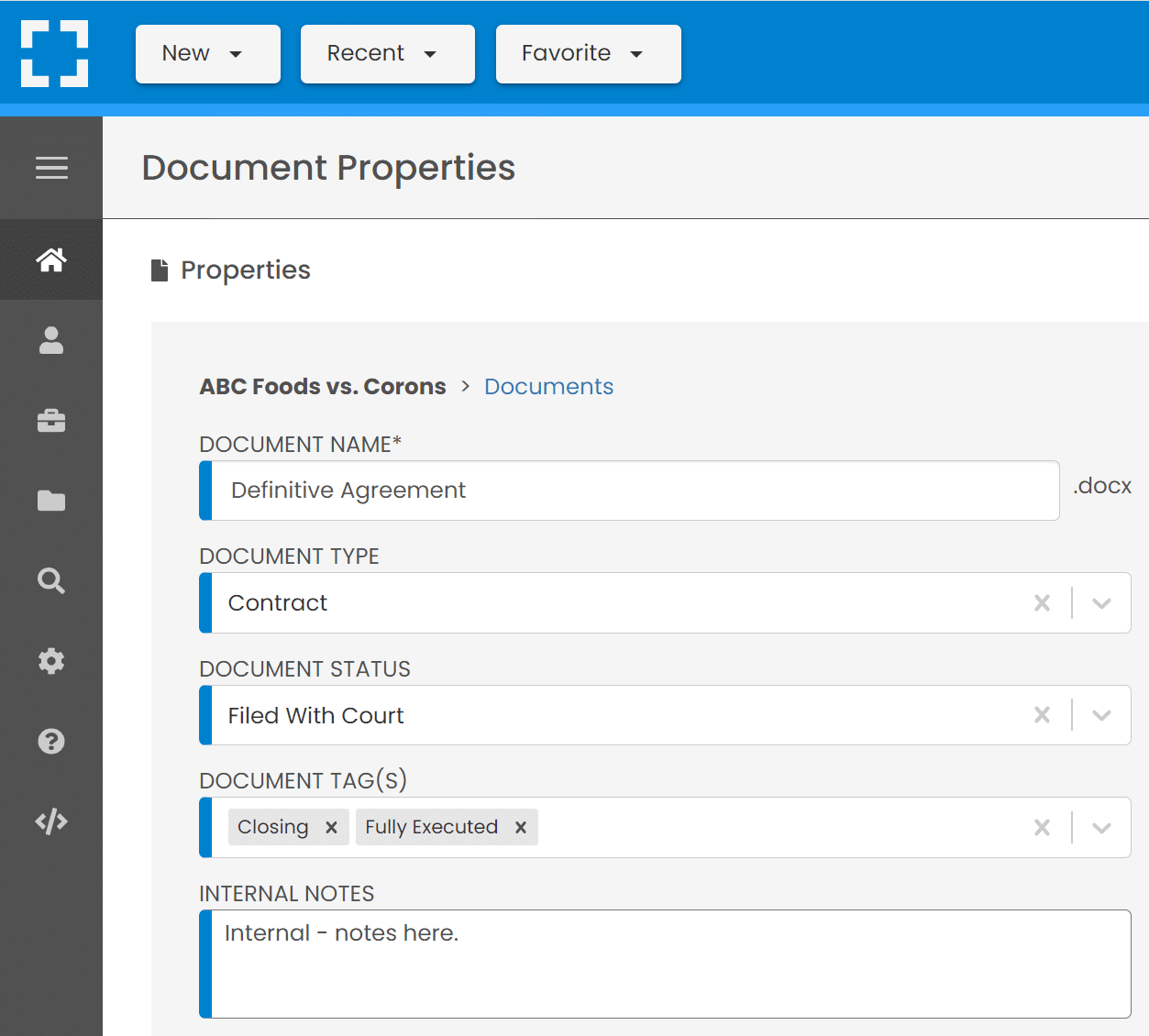
This not only declutters the visual overview of your matter documents, but makes filtering, sorting and searching documents much easier.
By way of example, here is a particular matter in LexWorkplace with a number of documents. Many of the documents have been given a Type, Status and or Tag, making important elements of each document visible at a glance.
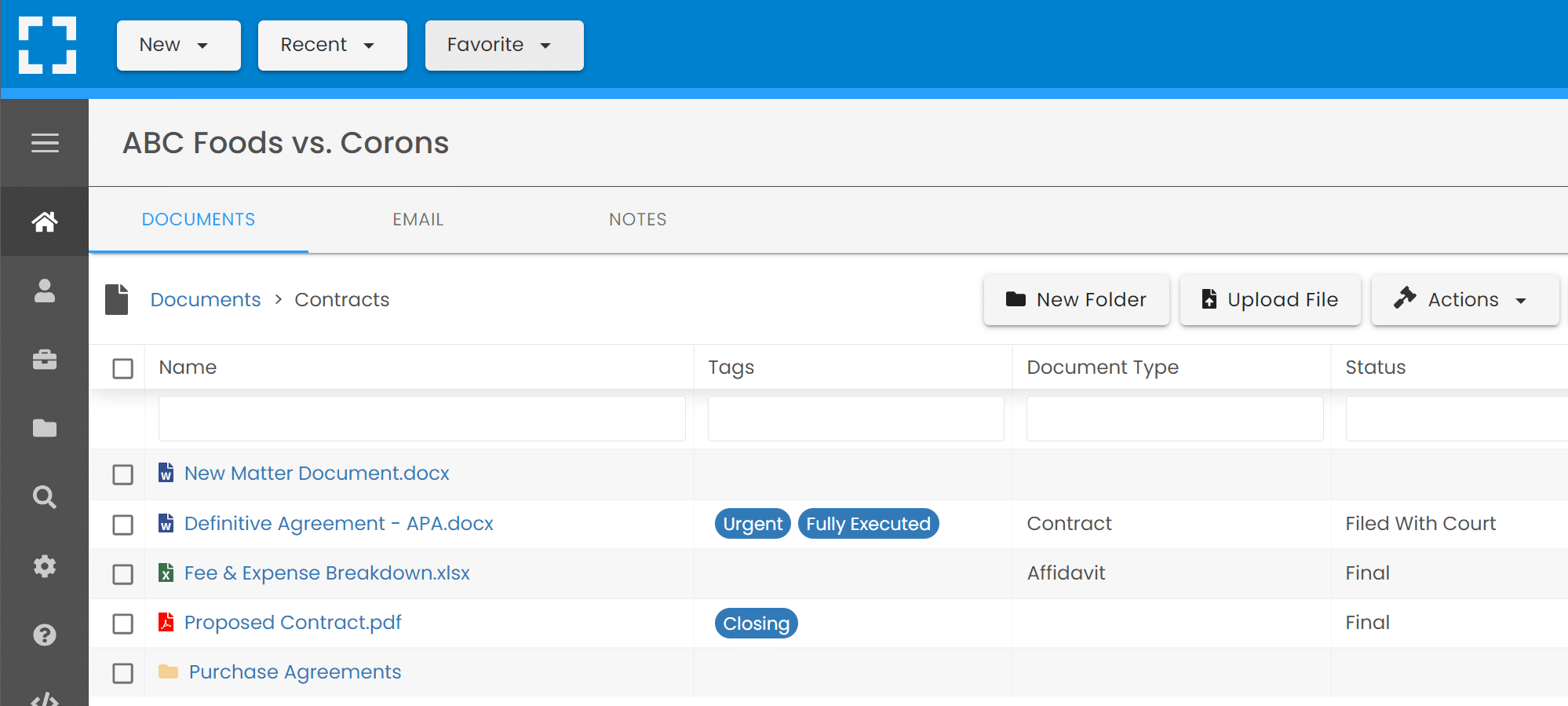
So coming back to the original question: What should your file naming convention be? The answer is: With a proper law firm Document Management System, it doesn’t matter. Filenames are largely unimportant, so our advice is keep them short and sweet.
Have Meaningful Organization
Below you’ll find some ways to have more meaningful organization. You may choose to adopt some practices and disregard others, so choose wisely based on what is easily repeatable what would help your firm the most.
Categorize by Case or Client
Create a main file for each client or case. This primary file will house all pertinent subfiles.
Subdivide Files
Divide your files into meaningful categories for easier navigation and understanding. For example:
- Correspondence: Letters, emails, faxes, and other communication.
- Pleadings: Complaints, answers, motions, and other court filings.
- Discovery: Interrogatories, depositions, requests for admissions, etc.
- Research & Legal Memos: Any legal research, related memos, or briefs.
- Client Communications: Notes from client meetings, phone calls, etc.
- Evidence: Photographic evidence, charts, or other case-related materials.
- Contracts and Agreements: If relevant to the case.
- Billing and Invoices: Records of billing, invoices, and payments.
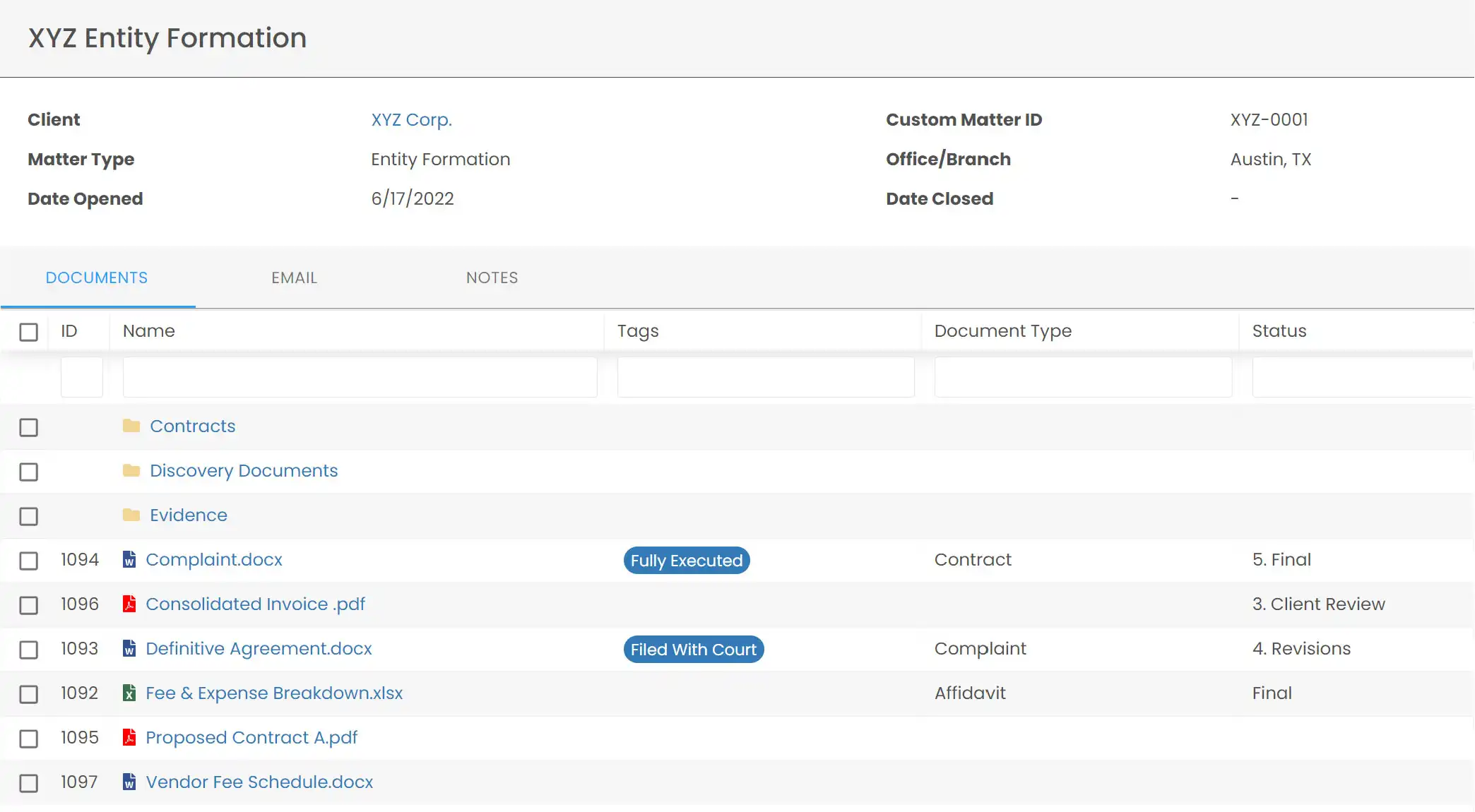
Label Clearly
Use a consistent labeling system. Labels should quickly identify the contents of the file, the client, and the date (or date range). Color-coding can be useful, especially in larger practices.
Use Chronological Order
Inside each subfile, documents should be arranged chronologically, with the most recent document on top.
Prioritize Data Security
For legal practices, documents hold a power and significance unlike any other industry. From sensitive client information to case strategies and evidence, legal files are a treasure trove of confidential details. As such, ensuring their security isn’t just a preference; it’s an absolute necessity.
Below you’ll find some best practices that will both improve your data security and further organize your legal files.
Backup Important Files
Always have a backup, especially for digital files. Use secure, encrypted cloud storage or external hard drives stored in a safe location. Better yet, utilizing a cloud-based software that takes extra measures to ensure your data security relieves you of some of the burden.
Consider software that offers:
- End-to-End Data Encryption for Protecting Data Each Step of the Way
- Multiple Data Centers for Backing Up Data More Securely
- Multi-Factor Authentication for an Additional Layer of Security
- User Control for Setting Permissions
Retain Files According to Regulation and Need
Different jurisdictions have different regulations regarding how long certain legal files must be kept. Ensure you’re familiar with these regulations and adhere to them. For files not bound by such regulations, create a retention policy based on practical needs.
Secure Confidential Information
Legal files often contain highly sensitive information. Ensure that physical files are kept in locked cabinets and that digital files are encrypted and protected by strong passwords.
Regular Maintenance
Periodically review and clean out files. Archive or shred (for physical files) or securely delete (for digital files) documents that are no longer needed.

Choose the Best Method for Your Firm
Assess Current Needs and Volume
Before selecting a method, evaluate the current volume of files the firm handles and anticipate future growth. This will ensure the chosen method is scalable.
Ease of Access
An organization system is effective only if it enhances accessibility. Choose a method that allows authorized personnel to access files quickly and efficiently.

Physical vs. Digital
Determine whether a physical filing system, a digital system, or a hybrid of both suits the firm best. Factors like the nature of cases, client preferences, and technological infrastructure play a role.
Use Legal Document Management Software
There are software solutions designed specifically for the legal industry. They often come with features like easy retrieval, encryption, and access logs, ensuring both organization and security.
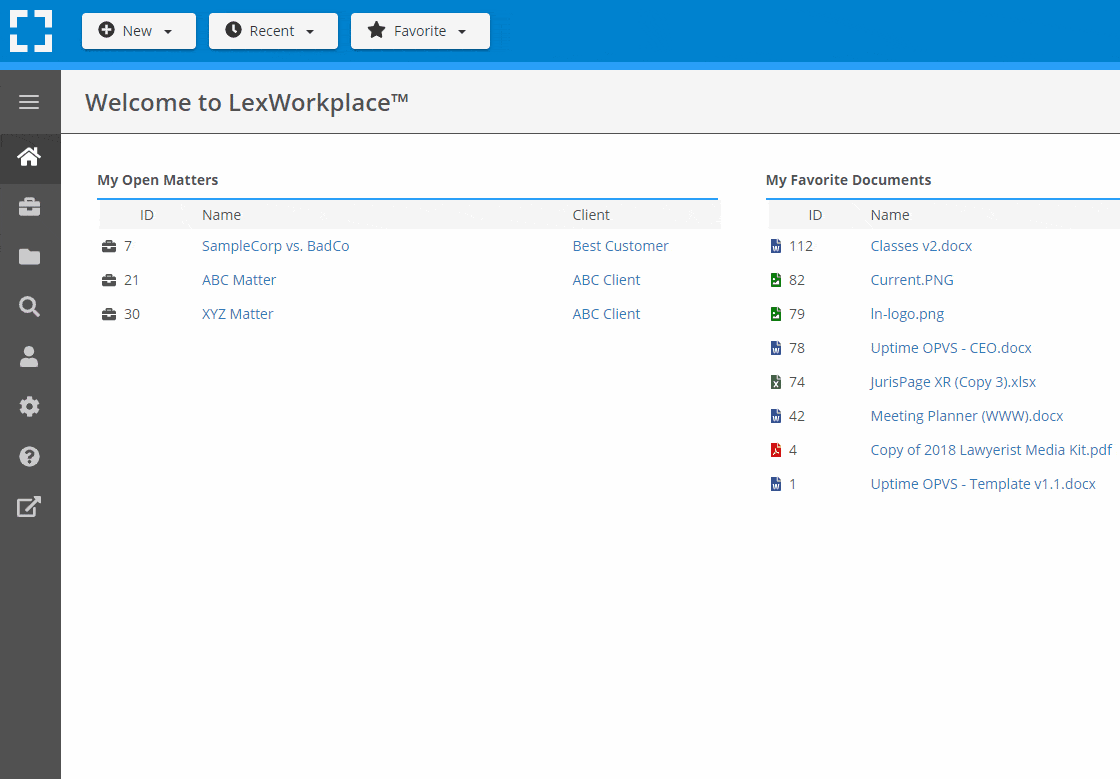
Execute Proper Training
Develop a File Closing Procedure
When a case concludes, have a standard procedure to close out the file. This may include sending final correspondence to the client, ensuring all bills are settled, and archiving the file.
Align Everyone and Provide Support
Ensure that everyone who accesses the files, from paralegals to attorneys, knows and follows the filing system. Having everyone on the same page is paramount to optimal organization. Especially in the beginning, have patience and be willing to provide training and support to anyone who may need it.
Develop a Comprehensive Training Manual
Create a detailed manual that covers every aspect of file organization. This manual should act as a guide for new employees and a reference point for existing ones.
LexWorkplace Success Story
- Have Good File/Document Naming Conventions
- Have Meaningful Organization
- Prioritize Data Security
- Choose the Best Method
- Execute Proper Training
Book a 15-Minute Demo
Using the Cloud for a Paperless (or Paper-Lite) Law Firm
We believe the best way forward for any law firm is to use the tech we have available at our fingertips. Work revolves around computers and mobile devices. Your files should be no different. For optimum file storage and organization, we recommend taking a paperless law firm approach by utilizing the cloud.
The Benefits of Going Paperless (or Paper-Lite)
A Note About “Paperless” vs. “Paper-Lite”
We know that some documents such as court-issued documents must remain in paper form. And sometimes, going 100% paperless may not be practical for every firm. In these cases, paper-lite is a great option. This means keeping physical paper documents only when necessary. Just be sure to keep an electronic copy too.
We know that the phrase “going paperless” can strike fear into the hearts of those who have used paper files exclusively since the start of their practices. However, trust us when we say that the benefits outweigh any apprehension you may feel.
For example, eliminating paper can:
- Improve your file organization: By going paperless, you can organize your legal files by matter and easily maintain consistency. Locating a specific document becomes a matter of a few quick clicks, eliminating lengthy searches.
- Ensure file security: Legal documents in your possession hold vital client details, which you're obligated to secure. Traditional paper documents are vulnerable to risks like fires or theft. Digital systems, especially cloud-based ones, defend your data with measures like backups and encryption.
- Enable you to work from anywhere: Recent times have emphasized the importance of flexibility in work locations. Regardless of whether you're at home or at the firm, accessing your documents should be effortless. Cloud solutions provide this accessibility.
- Help you meet client expectations: Did you know that your clients expect you to be paperless? It’s true. More and more people value conveniences like electronic forms and digital signatures. To ensure client loyalty and satisfaction, adapting to these expectations is crucial.
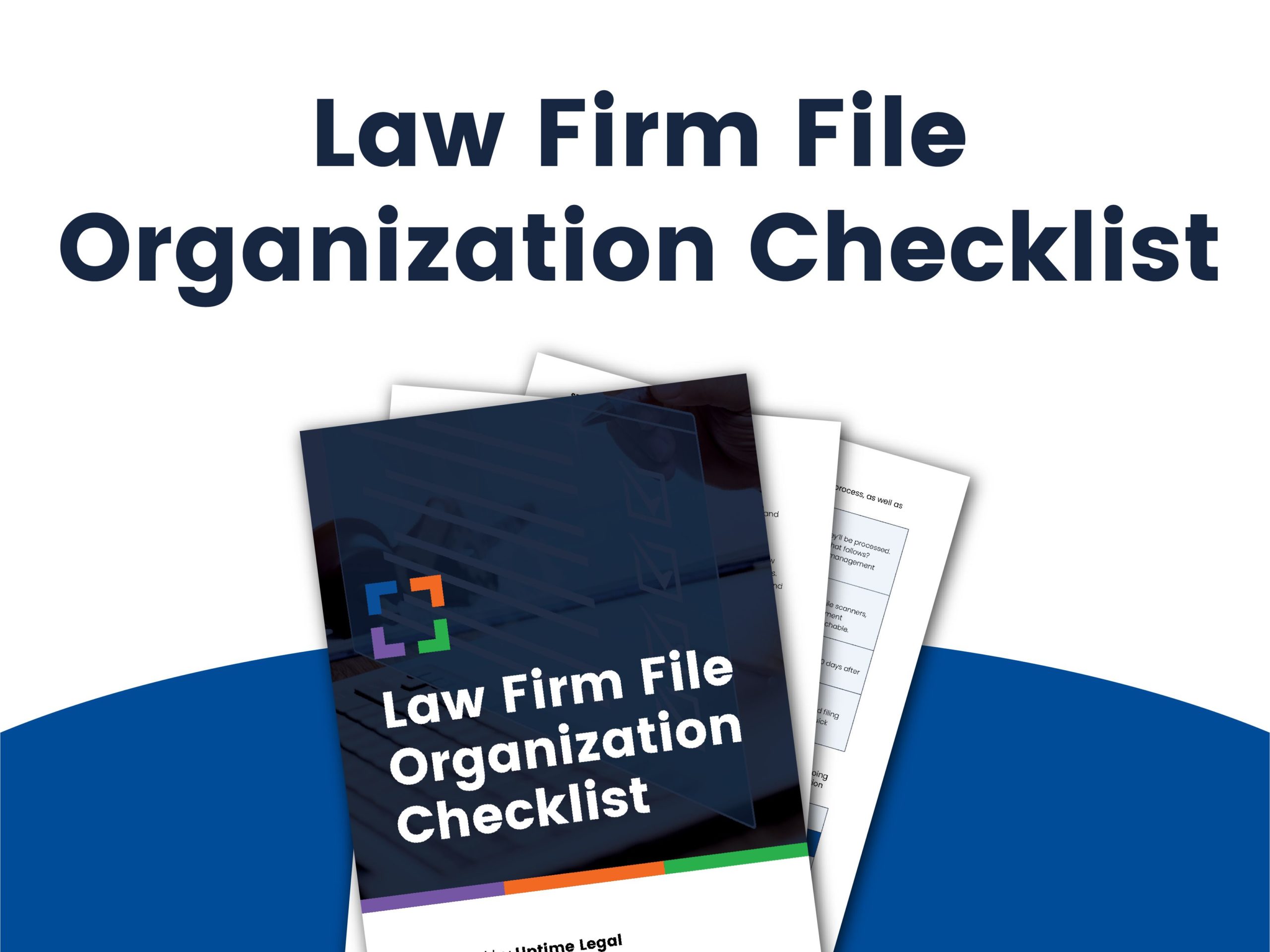
Get the Checklist: Download our Law Firm File Organization Checklist and implement an air-tight system for organizing matters and documents.
The Basic Process for Going Paperless (or Paper-Lite) in Your Law Firm
If you wish to move forward with moving your files to the Cloud, there are some basic steps you must take for success:
Set Up Your Hardware and Software
Additional hardware is required to go paperless, including scanners, mobile scanners, and electronic signature tools.
You’ll also want Optical Character Recognition (OCR) software to convert scanned documents from image-based files to text-based files for easy index and search.
We recommend also selecting a document management system (DMS) that includes OCR and other critical management tools.
We dive deeper into DMS solutions below.
Clean Up Your Paper Files
Cleaning up hard copies is a necessary step to going paperless.
- Declutter and Purge Documents
You’ll need to take the time to go through all of your files and determine what’s necessary to keep and what you can get rid of.
We recommend checking your local policies for file retention before doing so. Go ahead and get rid of any of the documents you no longer use or need. After the purge, you should already feel a bit lighter.
- Have a Hard Copy Retention Policy
Decide how long you’ll keep any hard copies you receive going forward.
For example, you may choose to keep client hard copies for 30 days after a matter is closed. Once you decide on your retention policy, stick to it. Be sure to communicate this retention policy to all of your new clients so they have the option to get their hard copies back if they want them.
- Pursue the Paperless Approach
If you plan on going 100% paperless, you can start scanning those files into your new system.
And if you plan on keeping some physical files, you’ll need to decide how you’re going to file them to improve your system. Do your best to refrain from generating new paper files.
Develop a Workflow
You must determine how documents enter your firm and how they’ll be processed.
For example, when you receive a document, what is the process that follows? Typically, this means scanning and saving the file to a document management system.
For a paperless approach, the best way forward is to follow this simple workflow:

Next, document this process. You’ll want to be able to share it with your entire team so everyone is following the same storage method.
Train the Staff
Recall our tips on training your staff.
You should keep everyone in the loop as you're making the transition, but it's important to remember support and guidance is an ongoing necessity.
Related: The Paperless Law Firm: Ready for a paperless law firm? Or at least heavily considering it? Read our comprehensive guide.
Legal Filing System Tools: Basic Cloud Storage vs. a DMS
With the philosophy covered, next, let’s dive into the practice side of setting up a legal filing system that will stand the test of time.
We’ve described how software tools will play a central role in your well-organized, scalable law firm filing system. And in general, you have two categories of software tools to choose from.
- Basic Cloud Storage
- Document Management Software
We’ll cover the advantages and disadvantages of both.
What Is Basic Cloud Storage?
In its simplest form, basic cloud storage is a cloud-based filing cabinet. These tools provide simple online storage for your firm’s documents, much like your C: drive. Basic cloud storage includes services such as:
By using one of these platforms to organize your legal files, you would create a set of top-level folders to use across your firm. Then, a new folder for each client or matter. All of your documents would be stored in their respective folders and accessed via a web browser or app.
Pros
- Low-Cost
- Easy to Setup and Use
- Simple Integrations with Productivity Software
Cons
- No Matter-Centric Organization
- No Document Metadata
- Limited Document Search
- No Email Management
- Frequent Sync/Conflict Issues
- Limited Version Management
Related Video: The Problem With Basic Cloud Storage
Basic cloud storage may be an easy entry-point for solo or very small law firms.
However, midsize and larger firms, or those wanting more control over their files may find tools, such as Google or OneDrive, lacking. For example, basic cloud storage tools may lack critical functionality such as full-text search, document profiling/metadata, version management, and email management.
Related — Basic Cloud Storage vs. Document Management Software: Learn about each solution to make the most informed decision.
What Is a Document Management System?
If you feel you need more than basic cloud storage, the best solution is a document management system or DMS. This is a robust system that not only stores your documents but enables you to manage them effectively.
A DMS offers everything you need to manage all of your legal files, including emails. These solutions offer a wide range of features, including client/matter-centric organization, document tagging, full-text search, file check-in/out, permissions/access management, email management, and so much more.
One of the key features of a DMS is the ability to organize your files by legal matter automatically. As a result, every file you need for each matter is conveniently placed in one location and ready when you need it.
Pros
- Matter-Centric Organization
- Full-Text Search
- Version Management
- Document Metadata / Profiling
- Document Check-Out / In
- Integrated Email Management
- Enhanced Data Security
Cons
- Higher Investment
- Document Migration Required
- Team Training Required
As you can see, solo practices and very small law firms can make due with basic cloud storage (or even the basic storage within some practice management solutions).
However, once law firms begin to grow in headcount and document volume, a DMS is often necessary to keep things organized and findable.
LexWorkplace Top Features
Cloud-based Document Management
- Secure Cloud Storage
- Client/Matter-Centric Org
- Full-Text Document Search
- Secure Client Sharing
- MS Office Add-In
- Email Management
- Windows + Mac Compatible
Don’t Forget About Email
As you think about the best way to organize your law firm’s documents, cases and files, don’t forget about email. Emails are documents too, and your overarching legal file organization strategy should include a way to similarly organize emails.
Ideally, you’ll want a system that allows you to:
- Save matter-related emails to that matter
- Save emails alongside, but separate from documents
- Review and search across saved emails
Related — Email Management for Law Firms: A complete guide on how to organize and manage email in a growing law firm.
Is Practice Management Software Enough?
While Practice Management software excels in areas like time tracking, invoicing, and calendaring, its proficiency in handling documents and emails often leaves room for improvement. In this video, we introduce a more effective approach.
Understanding the Gaps in Practice Management Software
When it comes to document and email management, its capabilities can be somewhat basic.
For instance, while you can store and sort documents by matter, you might miss out on advanced tools like unique document IDs, version controls, secure client sharing, audit trails, and more.
Certain case management tools might let you link an email to a specific matter and could provide basic plugins for platforms like Outlook. Still, the real game-changer lies in functionalities that allow email categorization akin to document folders, prevention of duplicate email entries, brief note additions, and previews.
Superior document and email management tools don’t just store data — they index every detail, from the core content to metadata and annotations. Imagine being able to conduct a comprehensive search and then refine it based on matters, timelines, editors, and more.
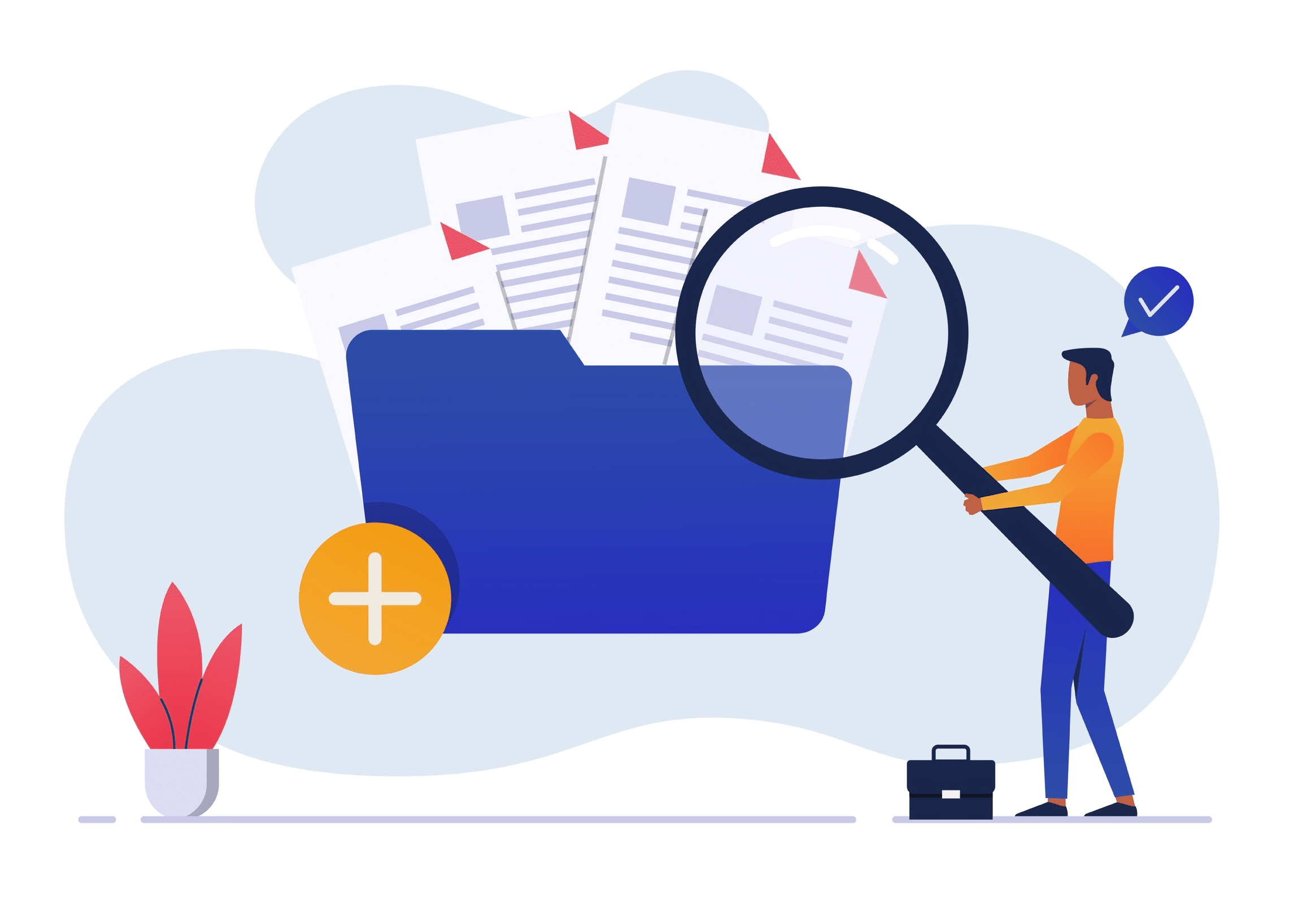
LexWorkplace: Simplified & Efficient Law Firm File Organization
The effectiveness of any law firm rests heavily on the flawless organization, rapid retrieval, and absolute security of its files. In these areas, generic solutions often fall short, leading to inefficiencies that legal professionals can ill afford.
If you’re ready to overhaul your legal filing system, we recommend implementing a robust, matter-centric document management system within your firm.
LexWorkplace emerges as a beacon in this space, offering a suite of features tailored to meet and exceed the unique challenges posed by legal documentation. With its advanced capabilities ranging from unique document IDs to powerful search functions, it goes beyond just storing files — it transforms how they are accessed, managed, and safeguarded.
For those who seek excellence in their practice and understand the value of streamlined document management, LexWorkplace isn’t just a recommendation — it’s an essential tool.
Embracing LexWorkplace is an investment in clarity, professionalism, and peace of mind, ensuring that your law firm operates at the pinnacle of efficiency and client satisfaction. Contact us to learn more.
Frequently Asked Questions - How to Organize Your Legal Files
An organized legal filing system is crucial for law firms because it saves time, improves the client experience, reduces in-office frustration, and prepares the firm for growth.
A well-organized system allows legal professionals to easily access critical documents and work more efficiently.
Going paperless or paper-lite can improve file organization, ensure file security, enable work from anywhere, and help meet client expectations.
By eliminating paper, law firms can streamline document management processes, protect sensitive client information, and provide better service to their clients.
The basic process for going paperless or paper-lite involves developing a workflow for handling documents, setting up hardware and software, defining retention policies for hard copies, and migrating existing documents to the cloud.
Basic cloud storage is a simple online storage solution for organizing legal files, whereas a DMS is a more robust, feature-rich system designed specifically for managing documents.
While basic cloud storage is low-cost and easy to set up, it may lack critical features such as matter-centric organization, document metadata, advanced search capabilities, email management, and version control. DMS, on the other hand, offers these functionalities and more, providing a comprehensive solution for managing legal documents.
Some popular basic cloud storage services for law firms include Google Drive, OneDrive, Dropbox, and SharePoint.
These services provide simple online storage for documents and can be accessed via a web browser or app.
OCR software is essential for a paperless law firm as it converts scanned documents from image-based files to text-based files.
This allows for easy indexing and searching of documents within the DMS, improving efficiency and accessibility.
Basic cloud storage has several limitations for legal filing systems, including a lack of matter-centric organization, limited document metadata, limited document search capabilities, no email management, frequent sync/conflict issues, and limited version management.
These limitations can make basic cloud storage less suitable for midsize and larger law firms or those requiring more control over their files.
Looking for Document Management Software?
LexWorkplace:
Modern Document Management for Law Firms
LexWorkplace is document & email management software, born in the cloud and built for law firms. Here’s a quick primer on how it works, or get your free trial to discover LexWorkplace for yourself.
Organize by Client & Matter
Organize documents, email and notes by client or matter. Store and manage all data for a case or project in one place.
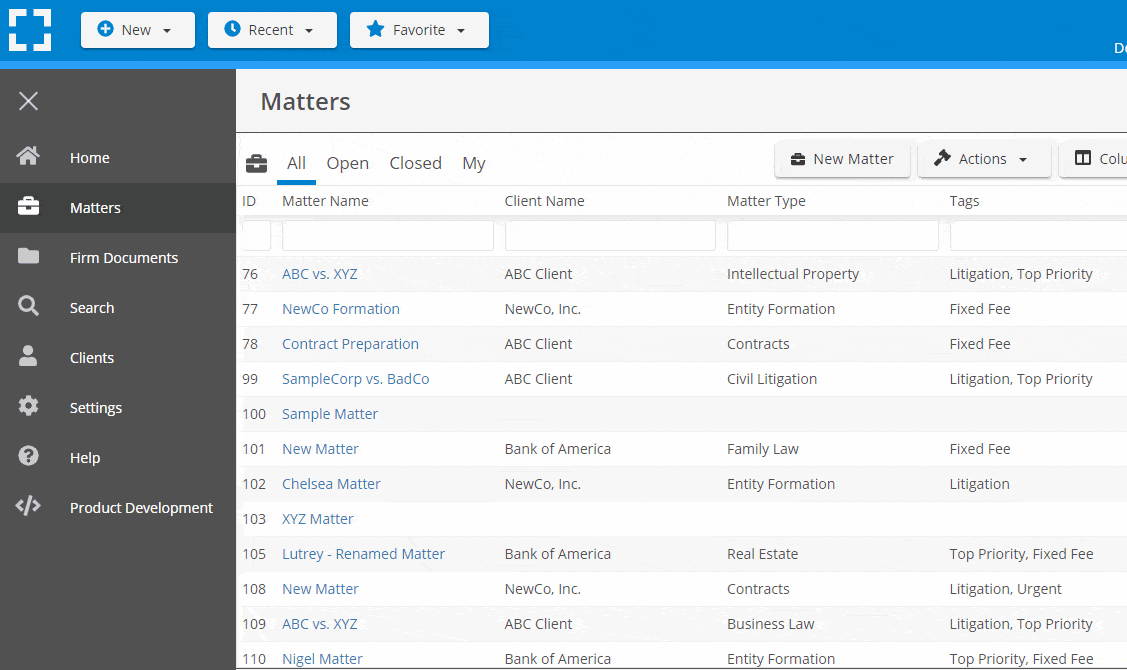
Go Beyond Basic Files & Folders
Supercharge your firm’s productivity with true DMS functions.
- Version Management
- Document Tagging & Profiling
- Document Check-Out / Check-In
- Microsoft Office Integration
- Automatic, Integrated OCR
- Convert Word Docs to PDF
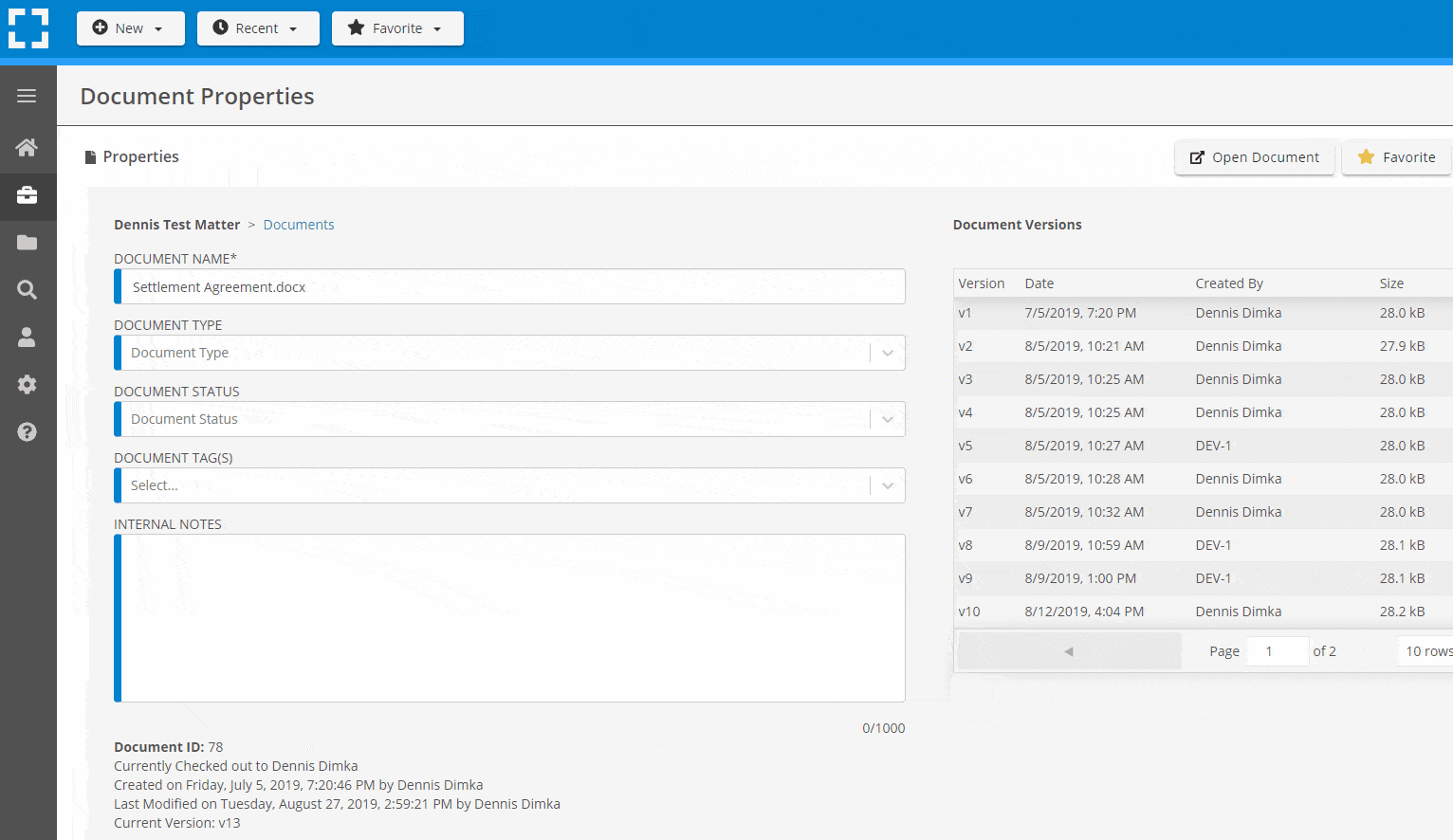
Search Everything
LexWorkplace is like Google for your law firm. Search across millions of pages, documents, folder email and notes in seconds. Refine your search by matter, document type, author and more.
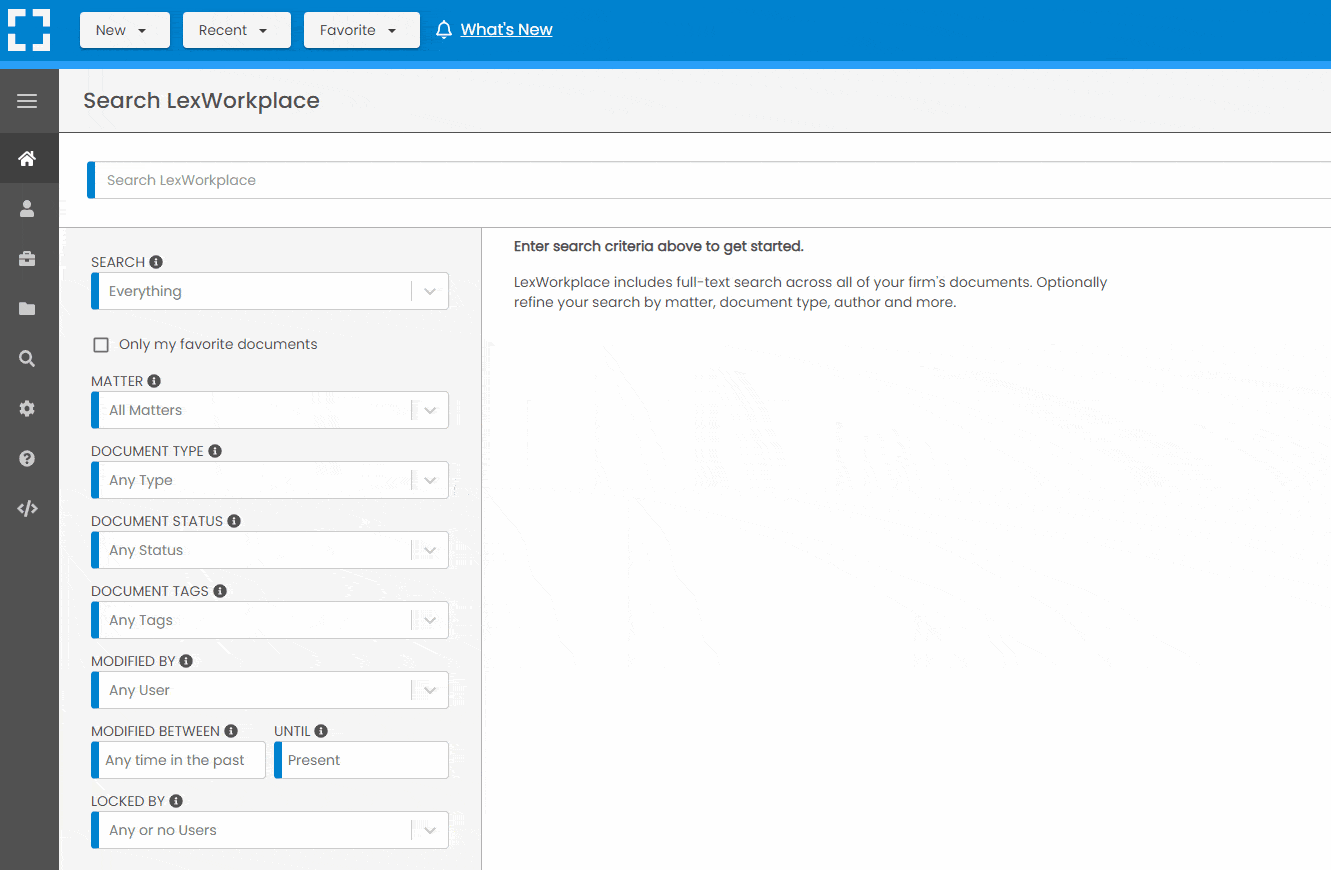
Search by…
- Client or Matter
- Document Type (Contract, Complaint, Order, etc.)
- Document Status (Draft, Final, etc.)
- Document Tags (Filed With Court, Fully Executed, etc.)
Outlook Integration + Comprehensive Email Management
Save emails to a matter without leaving Outlook. Saved emails are accessible to your entire team, organized and searchable.
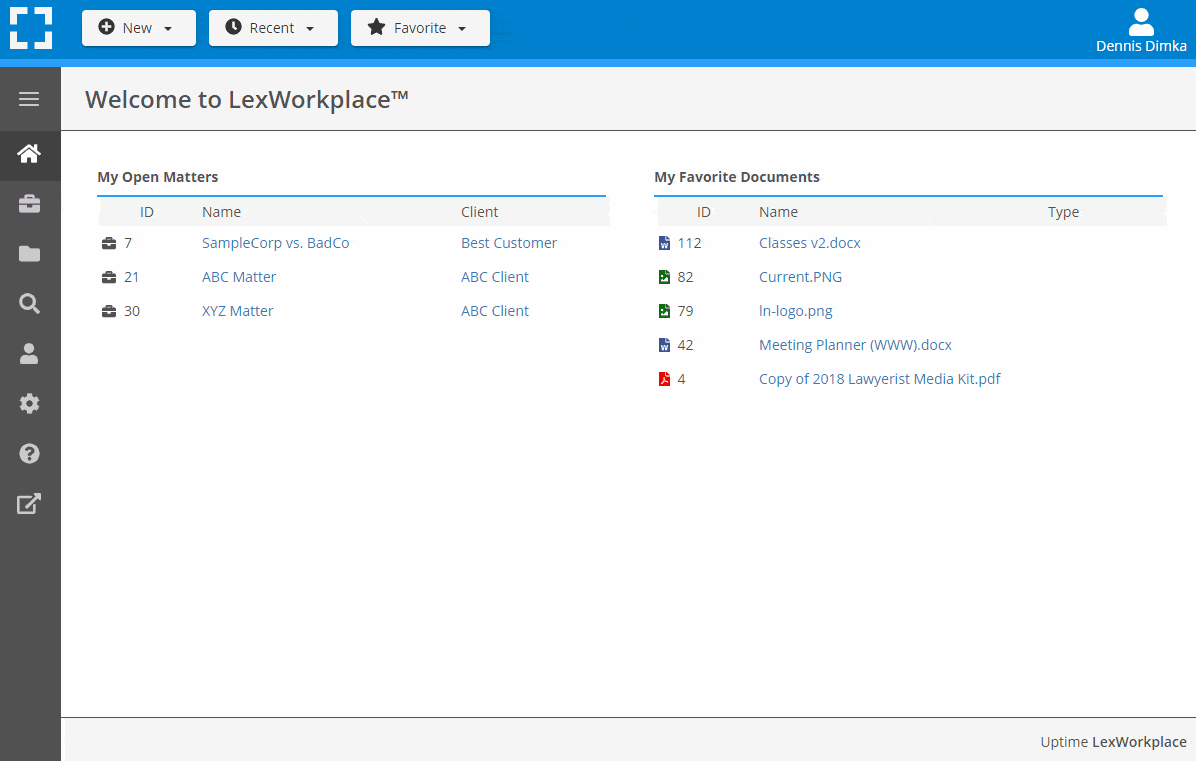
- Outlook Add-In that Works With Windows and Macs
- Save Entire, Original Email to a Matter in a LexWorkplace
- Email De-Duplication
- Organize Emails into Folders, Subfolders
Works with Windows and Macs
All of LexWorkplace is compatible with both Windows and Mac computers.
Next Steps
See What Clients Have to Say
Lawyers love LexWorkplace. See how the system streamlined one lawyer’s practice.
Watch the 5-Minute Demo
See LexWorkplace in action in our quick 5-minute overview and demonstration.
Or, if you want a one-on-one demo, or want to talk about LexWorkplace for your firm, schedule a call or demo below.
You Might Also Like
June 23, 2025
Role-Specific Benefits of Document Management Software for Law Firms
Legal document management software…
March 12, 2025
The Power of Version History: Preventing Disputes and Streamlining Collaboration
Learn how version history in legal…
Want More Legal Technology Tips?
Subscribe to Uptime Legal to get the latest legal tech tips and trends, delivered to your inbox weekly.
